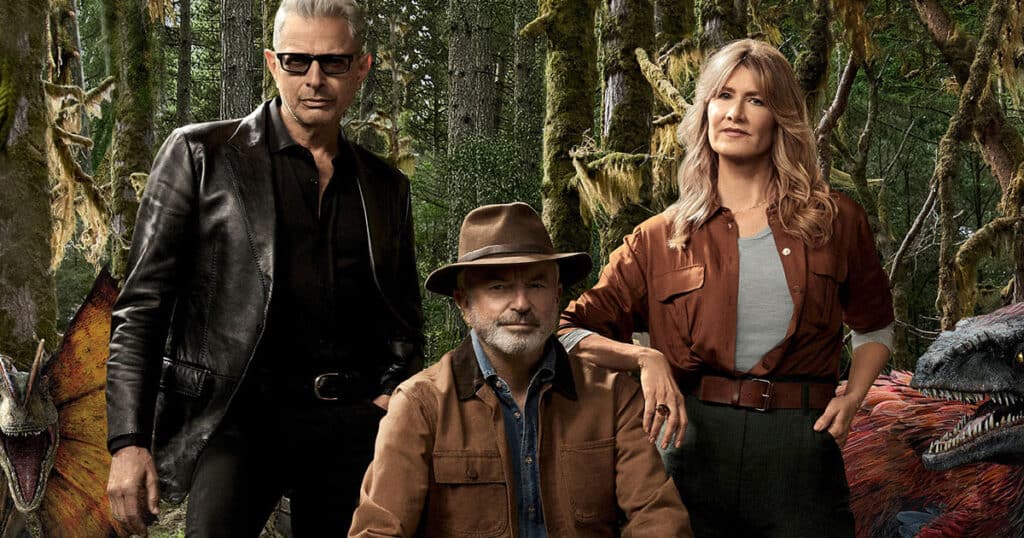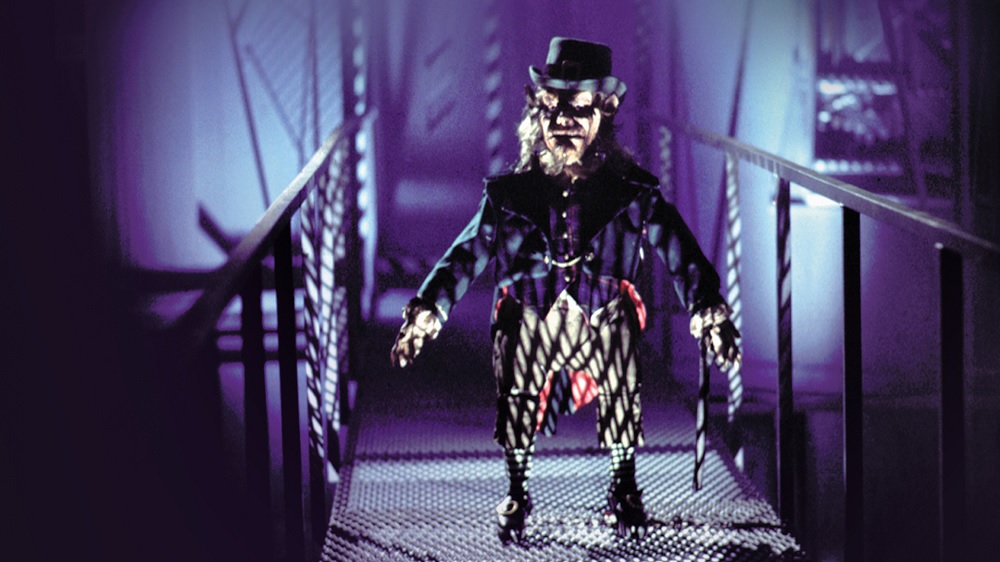Last Updated on May 28, 2024
Are you ready to head back to the Wasteland? In 2015, George Miller brought Mad Max back to rev up his engines in a massive way. Mad Max: Fury Road thrilled audiences and critics alike. The new chapter did something unexpected for a colossal summer action flick; it earned six Academy Awards and nominations for Best Picture and Best Director. That’s pretty great for what started as an Ozploitation flick in 1979.
What’s truly special about this franchise is that it’s all from Miller, aside from Mad Max Beyond Thunderdome, co-directed by him and George Ogilvie. Even still, every film in the franchise has delivered. The Road Warrior and Fury Road are top picks for this viewer. Even still, every movie in the series resonates, and it’s easily one of my favorite franchises. Whether it’s Mel Gibson or Tom Hardy, this is a fantastic world that I continue to appreciate with each watch. And with Furiosa heading into theatres, Mad Max fans have much to be excited about.

Recently, we had the opportunity to get an early look at Furiosa: A Mad Max Saga. And while I won’t go into a full review, As a massive fan of the franchise, I was not at all disappointed. Seeing what Mr. Miller has accomplished with his latest adventure is incredible. We will give you a more detailed review of the film closer to the film’s release after the official embargo ends. Until then, we did have a brief chance to speak with George Miller along with the other guests invited to the event. We’ve included a few highlights from the discussion and you can read our full Furiosa review HERE.
Was there an “aging” process for Anya Taylor-Joy throughout Furiosa?
No, we did not do the aging. There is one shot in which we made her smaller. Just one shot where we made her smaller, and then she became her normal age. No, it is just make-up. It is really weird when I see Anya on this press tour, and I see Anya as a different person.
It is freakish, and the same is true with Chris because I spent a year in the camera seeing them as their characters. And suddenly, I saw her with long hair, her immaculate skin, and she had make-up on. I said, “Wait a minute, that is not the real one.” The same goes for Chris Hemsworth; I can not believe that the character I have been watching for a year is on the screen. I know every frame; it is really hard for me to compute it, honestly.
How long did it take for you to plan out and storyboard the War Rig sequence?
I can not remember, but it took a long time. Fury Road was all storyboarding; in this case, we did a lot of storyboarding, but when it came to that sequence, Guy Norris, who is the second unit director and stunt coordinator, we have been working together for 41 years from the first, he was in Mad Max and he was a 21-year-old stuntman, and he is one of those people who has evolved with the technology and his son, he has got two sons, both who work as stuntmen and stunt people.
And even though the film was great, I really thought I could never make it on that movie. It was too bewildering. And I remember I spoke to Peter Weir, who had done his third feature, the second or third feature. And I explained it to him how difficult it was. He said, “George, don’t you realize it’s like that for every movie?” And he said, “Think about it. This is just…” At the time the Vietnam War was finishing, which is in the late Seventies. And he said, “Think about it as if you are on patrol in Vietnam. You’ve got your platoon; you’ve got to finish and get through it. You’ve got your mission.” He said, “But you don’t know where the snipers are. You don’t know where the landmines are. You don’t know what’s going to happen, but you’ve got to be agile enough to go with the flow and still get the end result.”
That stuck with me. It still sticks with me today. Things are going to happen. On this film, the worst things we had to struggle with were really inclement weather, bad weather.

How did you approach making Furiosa feel like its own isolated film and making people feel there were still stakes in her story?
Well, you’ve got someone who’s taken as a child, who can no longer depend on others. She has to unearth, if you like, un-evolved, un-practiced resources, inner resources to survive and then make a way back. And go through all that hardship and trauma and so on, and still endure the Wasteland, which is not an uncommon story. Each in our own way have to go through those sorts of things. And I know, I’m sure, in my own family, my parents who left. Both of them left in World War I Europe and ended up in Australia and made a life there. And we all have those in our histories, or we know people like that. So that’s a story that, regardless of what the outcome is, it’s not about where they end up; it is what happens and how that person is forged in those worlds. And we are interested in those sorts of stories.
And that’s why we go back over and over again, particularly as children, to the same story. I don’t know if you know that book, The Uses of Enchantment by Bruno Bettelheim. And he talked about how kids, and all this from your own childhood and from kids around you, that we go back to the same stories over and over again. A kid will want to watch or be read the same story over and over again until they get to a moment where they don’t need it anymore. And Bettelheim said, “Never ask the kid what they were processing”, but they were processing something because they can’t articulate it. But that’s one of the functions of stories: to help us process the world and make meaning of the world around us. And that’s why, regardless of what happens in Fury Road, Furiosa, for me is part of that process, I think. That applies to all stories.
Did you ever think about following up your own way as the next step, or did you always want to tell what came before?
Well, that was the one that was most prepared and that’s the one I’m most wanted to tell because it was different from Fury Road. If we did just another, all like Fury Road, the fact that it was a saga would be much more. It would be a big contrast to something told sort of almost in real time. There’s sequences told like the two big sequences in Fury Road were almost real time. That first act chase and the last act chase play out in real-time. So that’s a completely different filmmaking exercise than something told over 18 years, and that was much more attractive to me at this point.

Did the success of Fury Road and all the awards and nominations you got change your approach to making Furiosa or was that not in your consideration?
Only that it allowed us to make it. What drives how you make a film is always a story, and you’ve got to use the right tools to tell it. That’s the only catch. You don’t, look, classic example, when we made Happy Feet, the guy, the wonderful cameraman who shot Babe, Andrew Leslie, went to and shot Lord of the Rings. When he came back from the first Lord of the Rings, he showed us – he lives in Sydney, but he came back to Sydney – and he showed us the first, sorry, I said lives, he passed away a few years ago, that he’s a great guy, great cameraman, and he came back and showed us the first motion capture of Gollum. Now, I’d never heard of motion capture, but the moment I saw that we had the story of Happy Feet, and I couldn’t work out exactly, I didn’t want to animate every penguin because it means that the animators had to understand tap dancing and it takes everyone who’s a great tap dancer, learn from it as they’re kids.
So the moment you showed us that, the first thought was, “Andrew, you’ve just shown us how to make Happy Feet,” and we were able to use Savion Glover. I don’t know if you know Savion Glover?
I’ll give you the greatest living Tap dancer. By far, the guy’s a genius. We are able to use Savion Glovers and all that talent to make the penguin dance. Now, that’s what drives story, the tools, so all those other things, it doesn’t change your response. You just know that with all the difficulties that you might’ve gone through, Fury Road was a difficult movie to make. We had a bad relationship with the studio, Tom and Charlize, this is as well-documented with fighting, but that didn’t get in the way of the filmmaking, but they’re the difficulties that you have to cope with. It happens on every film. You don’t know where it’s going to come from, and you don’t know, it just happens.

You talked about the mo-cap changing Happy Feet. Were there any tools that you had access to that had the technology that had changed between Fury Road and now that helped make this?
The biggest one was Toy Box, PROXi that we did with Guy Norris and Harrison Norris that allowed us to do things. If you look at that sequence, all the action sequences basically, but if you look at that sequence, that’s got a lot of moving parts, a lot of dynamic. You’ve got underneath the truck, you’ve got on top of the truck, you’ve got both ends of the truck, you’re in the cabin, then you’ve got characters flying in on all sorts of flying things. So there’s a lot of space to use. It’s just not linear.
So you could do that with storyboards, but it’s very hard to figure out how each shot flows into the next. So that was the perfect tool to do it. Now, but previously, it can be very painstaking; it’s a bit like animation, but now the tools are getting way faster. What we did on Fury Road, we boarded and then we had this massive table out in the middle of the desert with a big tent and every single stuntman, often dressed in their wardrobe, and every single camera, like the edge arm, which is their crane arm, whatever, had a little model on the table and every war boy, every stuntman, had a little model storyboard and we did literally playing like kids.
And they’d say, “Okay, you move that way and I move this way and the camera does this and I get killed and fall off here.” All of that had to be worked out shot for shot. Every shot was rehearsed on Toy Box. Now , we are able to do that digitally. That’s not to say they hadn’t rehearsed in all this stuff, but on the day of the shoot and the days leading up to the shoot, that’s how it was done. Because that’s how you go from two-dimensional storyboards without any regard for how time moves. You can draw arrows and things, but you can’t really get the feeling of it. And it’s played out in real-time. Now you can do that digitally. That’s the biggest change , I think.

Originally published at https://www.joblo.com/joblo-revs-up-for-furiosa-and-talks-with-george-miller/







